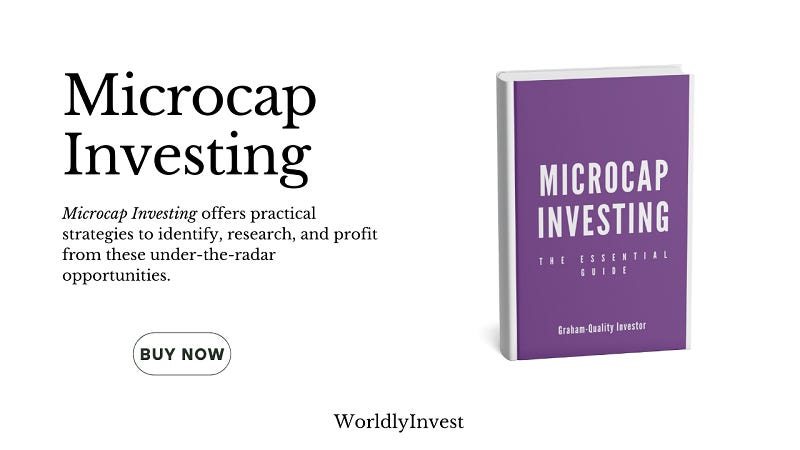You’ve Been Using ROE Wrong—Here’s What Really Matters
Most investors treat ROE as a golden metric. The higher, the better—right? Wrong.
TL; DR
ROE only matters in capital-intensive businesses and is useless for non-capital-intensive businesses like Coca-Cola or Pfizer, where brand equity and intellectual property drive value.
Instead of focusing on ROE, investors should analyze how management reinvests excess cash—whether through buybacks, dividends, or risky expansions.
Einhorn called out investment banks in 2006, showing how they turned from high-margin advisory firms into over-leveraged trading houses, prioritizing employee compensation over shareholder returns. This was an early warning before the 2008 crash.
Three case studies.
He prefers capital-intensive businesses with low ROE if there’s a clear path for improvement.
When people ask me what I do for a living, I generally tell them “I run a hedge fund.” The majority give me a strange look, so I quickly add, “I am a money manager.” When the strange look persists, as it often does, I correct it to simply, “I’m an investor.” Everyone knows what that is.
Most investors treat ROE as a golden metric. The higher, the better—right? Wrong.
In a 2006 speech, legendary investor David Einhorn exposed why blindly chasing high ROE can lead to terrible investment decisions. He broke down why ROE only matters in certain businesses, why it’s completely useless in others, and how smart investors make money by doing the exact opposite of what most people think.
The two types of ROEs
David starts by explaining the "two types of ROEs":
1. Capital-Intensive Businesses
Here ROE matters because capital-intensive companies require physical assets, infrastructure, and working capital to expand.
I define a capital intensive business as a business where the size of the business is limited by the amount of capital invested in it. In these businesses, growth requires another plant, a distribution center, a retail outlet or simply capital to fund growing accounts receivable or inventory. Examples include almost all traditional manufacturing companies, distribution companies, most financial institutions and retailers.
2. Non-Capital Intensive Businesses
Here ROE is useless (Wait... what?).
Companies like Coca-Cola, Pfizer, and consulting firms don’t need massive physical investments to grow. Instead, their value lies in intellectual property (IP), brand equity, or human talent—none of which appear on the balance sheet. Because of this, their book value is often understated, making ROE an unreliable metric.
All that matters is how long, sustainable or even improvable the company’s competitive advantage is, whether it is intellectual property, human resources or market position.
For example, drug companies are generally limited by the composition of their patent portfolios rather than by their raw manufacturing capacity. Human resource companies are the ones known for the “business going up and down the elevator” every day. Most service companies qualify, including almost any company that sells labor whether it be nurses, construction workers or consultants.
I believe that it is irrelevant to worry about ROE or marginal return on capital in non-capital intensive businesses. If Coke or Pfizer had twice as many manufacturing plants, the incremental sales would be minimal.
Since these businesses don’t need constant reinvestment, Einhorn argued that focusing on capital allocation is far more important than ROE. The real question becomes:
Does management reinvest excess cash wisely?
Do they return it to shareholders through dividends or buybacks?
Or do they waste it chasing acquisitions and risky ventures?
He pointed out that many once-great, non-capital-intensive businesses destroyed value by reinvesting in capital-heavy projects they didn’t need. His prime example? Investment banks.
The case of investment banks
At the time of Einhorn’s speech in 2006, investment banks were still seen as highly profitable, well-run institutions. But he saw them differently. He argued that they had turned from high-margin, non-capital-intensive businesses into bloated, over-leveraged entities—and their ROEs were hiding the real problem.
Originally, investment banks were pure service businesses—they advised clients, underwrote deals, and facilitated trades, all without needing to hold large amounts of capital. These were high-ROE businesses with strong margins.
But as Einhorn explained, over time, banks began using their excess cash to fund proprietary trading, risky investments, and leverage-heavy lending—things that required massive amounts of capital. This drove down their true profitability, but because they still reported decent ROEs (around 15-20%), investors didn’t see the problem.
David suggested that these firms were being run for their employees, not their shareholders. Instead of returning cash to investors, banks kept reinvesting in capital-intensive, high-risk areas to justify high compensation structures. He even joked that investment banks were evolving into hedge funds with above-market incentive fees.
The investment banks are run for their employees rather than their shareholders. They are run so that there is just enough shareholder return left so that shareholders don’t complain too loudly and a 15-20% ROE seems to be that level. Of course, the returns could be higher, but around 50% of the revenues go to employee compensation.
Given the risk taking nature of the incremental revenues and the fact that 50% of the revenues go to employee compensation, the investment banks are evolving into hedge funds with…how shall I put this?…above-market incentive compensation fee structures.
Two examples of investment banks
New Century Financial
New Century Financial started as a high-margin, non-capital-intensive mortgage lender, generating strong returns by originating and selling mortgages rather than holding them. But instead of sticking to this profitable model, the company shifted to holding mortgage loans on its books, turning itself into a highly leveraged, capital-intensive business.
I thought this was such a bad idea that I joined the Board with the goal of unwinding this decision and to free the valuable service business from the investment business. It is too soon to discuss my progress.
Within a year, New Century became one of the first major casualties of the 2007-2008 financial crisis.
Washington Group
Unlike New Century, Washington Group was a company Einhorn saw as deeply undervalued due to Wall Street’s misunderstanding of its financials.
Washington Group provided engineering, construction management, and infrastructure services. These were non-capital-intensive businesses that generated cash flow from service contracts rather than requiring constant reinvestment in physical assets.
At the time, Wall Street had written off Washington Group, believing it was fairly valued at $55/ share based on its earnings guidance. But David saw three key reasons why this valuation was wrong:
Hidden value in cash & tax benefits: The company had $8/share in cash and a $7/share tax NOL that investors weren’t factoring in. Adjusting for these, the actual business was valued at just $40/share—far lower than its true worth.
Understated earnings: Washington Group had three contracts with cost overruns, which led to repeated charges in recent years. But Einhorn noted that the company had a history of recovering money on claims—even though accounting rules prevented them from recognizing claims revenue until the cash was received. This meant the reported earnings understated true profitability.
Margin expansion: The company’s backlog had grown 16%, showing future revenue increases. Once it exited unprofitable "rip and read" contracts (low-bid government projects that often led to cost overruns), it could significantly expand its margins.
Einhorn estimated that real earnings power was closer to $3.60/share, not the $2.50/share Wall Street was pricing in. The stock was effectively trading at 11x highly conservative earnings, while similar companies traded at 20x more aggressive estimates.
Why low ROE companies are better
In the speech, David says that he prefers capital-intensive businesses with low ROEs, as long as there’s a clear path for improvement.
Coming back to my main theme. I believe it is very important to analyze ROE and marginal returns on capital…but only in capital intensive businesses. It may surprise you, but I prefer at the right price capital intensive businesses with low ROEs, where I think the ROE will improve, to high-, or at least medium-ROE businesses.
Strong returns attract competition, leading to new entrants flooding the market or existing players copying what works.
The problem with high ROEs in capital intensive businesses is that it is hard to sustain the ROEs. Here, high returns attract competition both from new entrants that come with new capital and existing competitors that try to see what the better performin gcompetitor is doing to copy it. The new capital and the copycats often succeed in driving down the superior ROEs. Really bad things happen to earnings when a 25% ROE turns into a 10% ROE.
A business moving from 10% to 15% ROE can generate huge upside, while a shrinking ROE can destroy shareholder value.
This is why I prefer the low ROEs. Great things happen to earnings when a 10% ROE becomes a 15% ROE. ROE can improve three ways: better asset turns, better margins and by adding financial leverage. I like to look for companies that can expand the ROEs in as many of these levers as possible.
The case of Arkema as a classic low-ROE company
To conclude the speech, Einhorn highlighted Arkema as a prime example of a capital-intensive business with a low ROE that had room for improvement—exactly the type of investment he prefers.
Arkema was a chemical company spun off from the French oil giant TOTAL in 2006. At the time, it was underperforming with low margins and a depressed ROE, making it unattractive to many investors. However, David saw a major opportunity:
Underutilized assets: The company had excess working capital (23.6% of sales) compared to peers operating in the mid-teens. If Arkema reduced this to industry norms, it could free up significant cash or support revenue growth without needing more capital.
Low margins with room to expand: Arkema’s 7.7% EBITDA margin was far below competitors like Degussa, whose margins were nearly three times higher. Einhorn believed Arkema could close the gap, leading to much higher profitability.
Asset turnover improvements: The company had €220 million in underutilized construction projects that weren’t yet producing revenue. As these projects came online, Arkema could boost sales without additional capital investment, improving efficiency.
Cheap valuation: At €38/share, Arkema was trading at 1.2x book value and just 4.9x depressed EBITDA, well below industry norms. If Arkema’s turnaround succeeded, its valuation could expand significantly.
Einhorn’s upside case saw Arkema’s EBITDA margin rising to 10%, which would imply a 3.6x multiple on "reasonably achievable" EBITDA. After executing a 10% stock buyback, he estimated €5 in EPS, putting the stock at a 7.6x P/E with a 12% ROE. If Arkema eventually matched Degussa’s margins, EPS could reach €8.60, bringing ROE to 20% and the P/E to just 4.4x.
Summary
David Einhorn’s 2006 speech challenged the conventional wisdom that high ROE always equals a great investment, arguing that ROE only matters in capital-intensive businesses and is useless in asset-light companies where brand strength or intellectual property drive value.
Got a burning question or a topic you're curious about? I'd love to hear from you! Please drop a comment 💬 below or shoot me an email 📧 at worldlyinvest@gmail.com







"Both our operating and investment experience cause us to conclude that turnarounds seldom turn," Buffett wrote in 1979
Arkema is a good example failed to turnaround.
My Expected Net Profit Growth
= ROA × Reinvestment Ratio × (Current Asset ÷ Total Liabilities)
= 2.4×(1-3.6÷4.51)×(5÷8.15)
= 0.2971 %
≈ 0 %
By PEG
P/E (intrinsic)
= 0.2971
≈ 0
EBITDA Growth 2024 = +2.07%
Revenue Growth 2024 = +0.32%
Gross Profit Growth 2024 = -1.07%
Net Profit Growth 2024 = -15.92%
And
ROIC < WACC (NO ECONOMIC POWER, Value Destructor)
Great writeup. Looking for potential improvements also requires confidence in the management team that this is on their agenda, and they will pursue it. This is less of a problem when you can get on the board and help the management see the light. For regular investors, this could be less of an option. Thoughts?